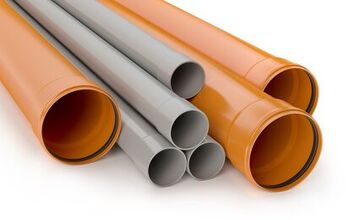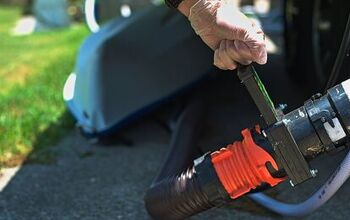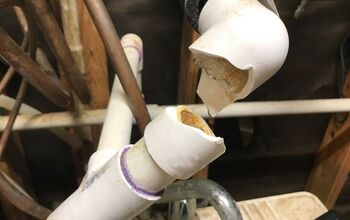What Size Pipe For A Toilet Drain? (Find Out Now!)

The size of a toilet waste pipe may not seem all that important, but the difference of just 1 inch allows a 4-inch pipe to move a lot more waste than a 3-inch pipe. Generally speaking, if your toilet’s drain pipe is 3 inches or larger, it’ll be sufficient for household waste disposal. More space also makes clogs less likely.
This article will explain the ins and outs of toilet drain pipe sizing, focusing on which sizes are best and why. Some general information on pipe maintenance is included as well.
The standard toilet drain pipe size is 3 inches, but 4-inch drain pipes are becoming more common. In terms of removing waste, a 4-inch drain pipe is better than a 3-inch drain pipe, but 4-inch drain pipes are not really required unless you have abnormal waste disposal needs. Contact a professional plumber to see which drain size is best for your toilet.
Do You Need to Install or Repair a Toilet?
Get free, zero-commitment quotes from pro contractors near you.

Which Pipes Are Best and Why
There are two main toilet drain pipe sizes: the 3-inch drain pipe and the 4-inch drain pipe. The 4-inch drain pipe can move more waste than its 3-inch counterpart, and such explains why 4-inch drain pipes are often used to move waste from multiple toilets.
It’s also possible to connect a single toilet to a 4-inch drain pipe, or you can connect the toilet to a 3-inch drain pipe and then have this drain pipe connect to a 4-inch main drain pipe. The main drain pipe is the pipe that connects directly to the sewer.
3-inch drain pipes are usually found in older homes, and sometimes adjusting these is difficult, as a lot of old homes weren’t designed with drain adjustment in mind. Below are some pros and cons for each drain pipe size.
3-Inch Drain Pipe Pros
The 3-inch toilet drain pipe is standard, and those who swear by these pipes say they do so because 3-inch toilet drain pipes are cost-effective and efficient. If you don’t have abnormal toilet use needs, then you’ll do fine with a 3-inch pipe. Also, the overall cost of installation will be cheaper. Moreover, a plumbing system that’s comprised of 3-inch pipes is less cumbersome.
3-Inch Drain Pipe Cons
While 3-inch toilet drain pipes have been standard for decades, it may be that 4 inch-drain pipes are going to be standard soon. More homes are being made with these drain pipes, which means they are no longer just for homes that expect abnormal toilet usage.
An obvious downside of 3-inch toilet drain pipes is that they are more prone to clogging, but to be fair this shortcoming is only relevant when the 3- and 4-inch pipes are being compared. On their own, 3-inch pipes do just fine, especially if they are maintained well and not misused.
4-Inch Drain Pipe Pros
When compared to the 3-inch drain pipe, the 4-inch drain pipe is superior because it is able to move more waste.
It is also less prone to clogging, but this doesn’t mean the 4-inch drain pipe can be used as a trash receptacle. One should only flush waste and toilet paper down the toilet, as anything else could cause a drain clog, even in a wide, 4-inch pipe.
These pipes are standard in configurations where multiple toilets share the same drain pipe, and such explains why you’ll find 4-inch drain pipes in a lot of commercial buildings. Accessing these pipes is as easy as accessing a 3-inch drain pipe, but one could argue that accessing a 4-inch drain pipe is easier because there’s more space.
4-Inch Drain Pipe Cons
These pipes are not all-around perfect. Installing them does cost more, and they surely aren’t space-saving.
On this latter point, you shouldn’t use a 4-inch drain pipe if your home is small, as it will necessitate installing a generally larger plumbing system, one that small homes rarely need.
It should also be noted that a 3-inch drain pipe will do just fine in the majority of houses, which means investing in a 4-inch drain pipe—when you’re not going to be moving an abnormal amount of waste—can be considered money poorly spent.
How the Flange Is Involved
When considering the size of a toilet drain pipe, you can’t forget about the flange. The flange is what attaches the toilet to the drain pipe, and if the diameters don’t match here then you’re in for a world of headaches.
These days, flanges are available in a variety of sizes and configurations, which means you shouldn’t have a problem finding one that will securely fit your drain pipe. If the flange and drain pipe do not fit properly, waste water leaks and the smell of sewer gas will be likely consequences of the mismatch, which explains why finding a secure match is paramount.
Do You Need to Install or Repair a Toilet?
Get free, zero-commitment quotes from pro contractors near you.

Related Questions
What should be done when there’s a leak at the toilet’s base?
If there’s a leak at the base of your toilet, a variety of things could be causing this. In addition to a poor drain-flange connection, there’s also the chance that the wax ring is compromised.The wax ring is what the toilet rests on to remain stable, but it also serves as a barrier, preventing sewer gas and wastewater from exiting the toilet. You’ll know that there’s a problem with the wax ring if, in addition to a wastewater leak, you smell a foul odor.When there’s a problem with the wax ring, contacting a professional plumber is advised. While wax ring replacement can be done DIY, it’s best to have a professional handle this, as they’ll get things right on the first go.
Which pipes are connected to a toilet?
Toilets utilize different pipes. There’s the toilet drain pipe, the water supply line, and the toilet closet bend. Knowing what each pipe does will allow you to take better care of your toilet.You should also make sure that all of these pipes are maintained well, especially the water supply line. If you can’t cut off water in the event of a clog, you may be dealing with an overflowing toilet. Yuck!

Matt loves everything DIY. He has been learning and practicing different trades since he was a kid, and he's often the first one called when a friend or family member needs a helping hand at home. Matt loves to work with wood and stone, and landscaping is by far his most favorite pastime.
More by Matthew Mountain



























